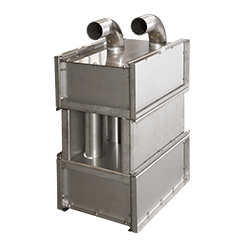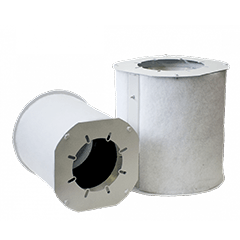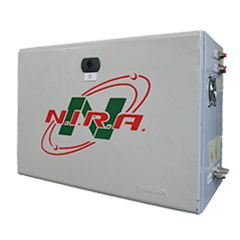Air filtration and separation
Air filtration and separation
Rimor S.r.l. boasts 30 years of experience in the filter sector, which has grown by applying its exclusive technology to every sector’s know-how to obtain specific and remarkable performances.
All Rimor filters – used in plants of various kinds and of multiple applications – allow to extend the life cycle of filters and maximize profit in the use of machinery. The combination of the filters with RECUBE, a Rimor S.r.l. patent, allows for the creation of an effective system for the separation of polluted particles.
Rimor S.r.l. filters and separators allow to guarantee emissions to the outside below the limits imposed by law.
Pollutants are divided into different types and derive from multiple processes; thanks to the experience of Rimor S.r.l. the best separation process is found, consisting of static pre-separation, primary filtration and secondary filtration (dry inertial, electrostatic, and by scrubber).
A particular product line of Rimor S.r.l. and CAMIT are sandblasting filters and painting filters that can also be combined with existing plants or mobile processing systems. The systems of Rimor S.r.l. are often used as stand-alone plants to create a long-lasting process.
The FLUID DYNAMIC study with finite CFD elements allows to guarantee perfect flushing of the filtering surface, thus managing to maximize the duration of the filters, both in the case of self-cleaning filters and in the case of inertial filters.
All Rimor filters can be combined with RECUBE and consequently are soundproofed and inserted in soundproof boxes.
Attachments
Markets
Features
Product Line
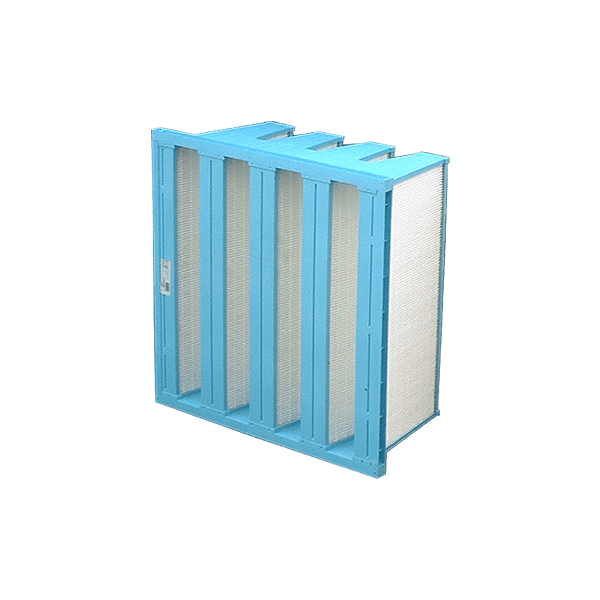
Pocket Filters
Air filtration and separation
The Rimor and Camit pocket filters are filters with the function of separating and filtering particularly fine particles, with the characteristic – both in the rigid and soft pockets – of offering an effective solution to problems of medium-capacity dustiness.
Pocket filters are often used to filter the ambient air to be introduced into environments/rooms. After the pre-filter, the pocket filter guarantees an excellent level of dust retention. The pocket filter is an effective and economical solution that comprises before the internal pocket filter a pre-filter that can be metallic for applications with oily materials such as moldings. By retaining the heavier dust, the pre-filter protects the next bag filter, thus increasing its longevity.
The Rimor pocket filtration system can retain dust of different nature, such as welding dust.
The pocket filters are combined with the Recube; particular Rimor patent guarantee, in addition to a duration superior to traditional filters, remarkable agility of management and flexibility, including being a soundproofed machine isolated from the outside and combined with the inverter also in an Industry 4.0 key.
Attachments
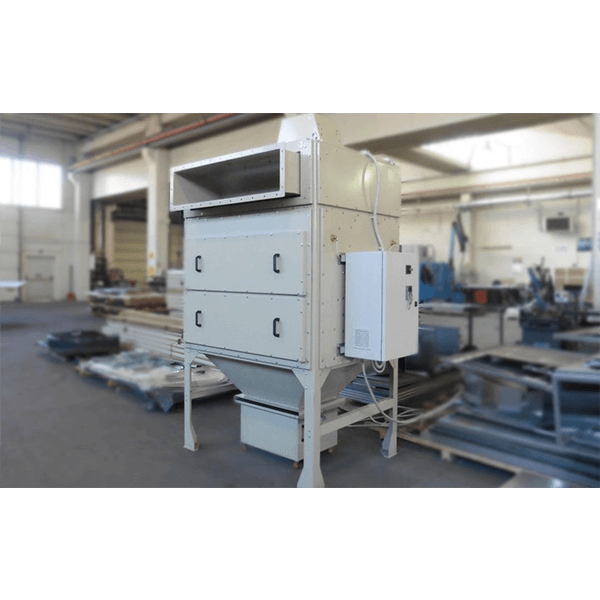
Horizontal or Vertical cartridges Dust Collectors
Air filtration and separation
Rimor cartridge filters are machines where the air is conveyed onto the cartridge filters. The cartridge filters, either paper or polyester, are used both dry and with coating protection for the most challenging and adhesive powders.
Cartridge filters are suitable for guaranteeing the filtration of dust and fumes, understood as suspensions of even very fine dust. The cartridges are made using filter materials that are folded -plisetted to have a large filtering surface in small spaces. However, the bending of the cartridges and their number must be studied according to the type of pollutant present; for example, some pollutants of an angular nature tend to stop in the filter’s folds.
The filter cartridges are then cyclically flushed in reverse using a jet of compressed air. The compressed air jet is conveyed through a cone system to generate a Venturi effect and draw a greater air. The air drawn in together with the compressed air finally causes a continuous fall of dust.
The quality of the compressed air is of extreme importance to ensure effective cartridge life.
The particular filters of Rimor, with inclined cartridges, are equipped with a dust separation pre-chamber that distributes the air evenly on all the cartridges so that the entire circumference is uniformly affected and the flow of dust that falls during dedusting do not dirty the filter cartridge.
Rimor then developed a particular system for varying the speed of the filter using an inverter, controlled by the pressure drop measured to extend the life of the filter and reduce consumption.
Attachments
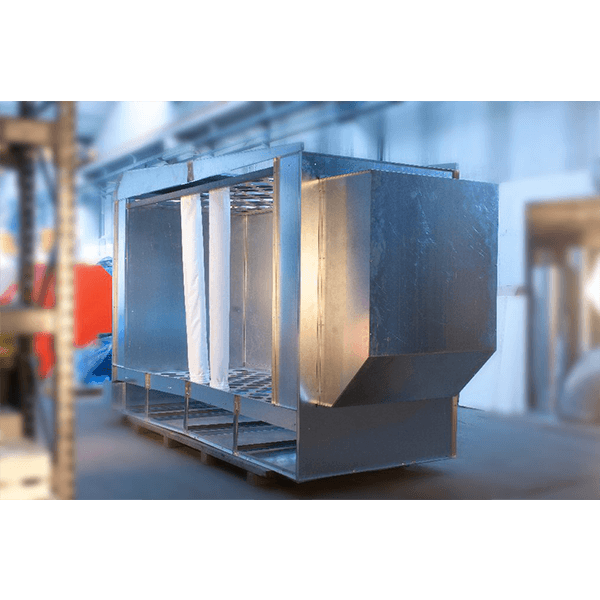
Baghouse filters
Air filtration and aspiration
Baghouse filters are used in the final separation process in plastics processing or transport plants such as wood or other medium-sized components, which do not generate fine dust. Rimor baghouse filters are made with a particular cycloning and soundproofing system.
Baghouse filters are usually able to separate coarse dust that have a limited amount of small-sized dust inside. The filter bag is made of polyester or fabric material, depending on the applications.
The central body is made with a particular soundproofing coating called Rimor Silent, a material capable of soundproofing. The Rimor Silent is a composite material patented by Rimor with a carbon fiber coating. Made and designed in collaboration with the Polytechnic of Turin, it creates substantial soundproofing and significant sound absorption, avoiding material deposits.
The Rimor baghouse filter system is modular because by adding or removing modules, it is possible to create separators with greater or lesser filtering surfaces.
The collection bags are placed under the filter bags, which have an easy disassembly and reassembly system of the bag itself.
The baghouse filter system also includes the version with the air inlet from above to be treated, excluding the “cyclonators and soundproofing” modules. The system from above is an alternative to the system with the cyclonator, and the choice is purely geometric. If the system is aerial, the solution from above is used, while if the system is on the ground, the system from below is used.
Attachments
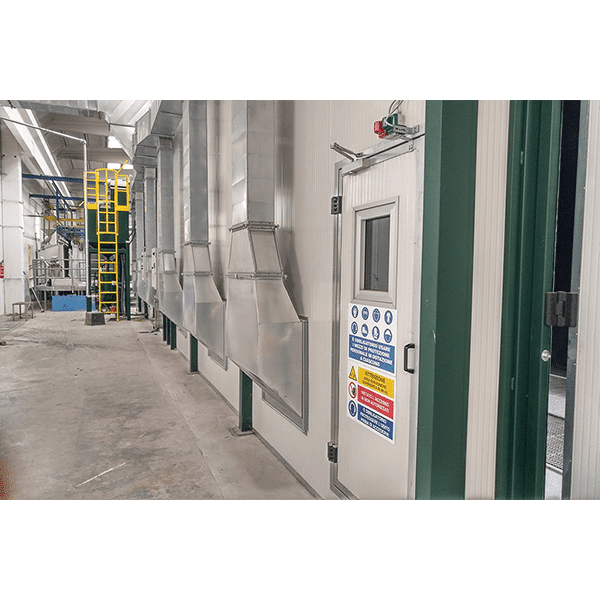
Painting filters
Air filtration and separation
The filters for Rimor and Camit painting plants are suitable for effectively filtering any paint. With 30 years of experience and applications with several hundred systems in Italy and abroad, Rimor and Camit have developed filters that can fully meet the customer’s durability and quality needs.
The design system of Rimor and Camit allows to deal with the filtration of the powder paint, a process characterized by a delicate suction through pleated cartridges and with counter-current dedusting to make the powder paint fall. The other types of paint filters are water-based paint filters, where you have a series of primary filters and then a fine filter to ensure the retention of the paint overspray dust.
Solvent-based paints are always aspirated with Rimor and Camit filters but with the attached OK need for adsorption filtration with activated carbon or zeolites. The activated carbon filters are inserted inside the filters using appropriately sized cartridges to ensure a correct duration based on use.
The Filters for Rimor painting systems are combined with the Recube, an exclusive and patented technology of Rimor, which allows you to effectively suck from the battery of filters, guaranteeing excellent duration of the machine using the vertical axis technology (well 8 times higher) and with easy access to the engine for maintenance purposes.
The filters for Rimor and Camit painting plants are combined with the Step by Step system of Rimor, which progressively increases the machine’s speed, according to the pressure drop of the filters.
Attachments
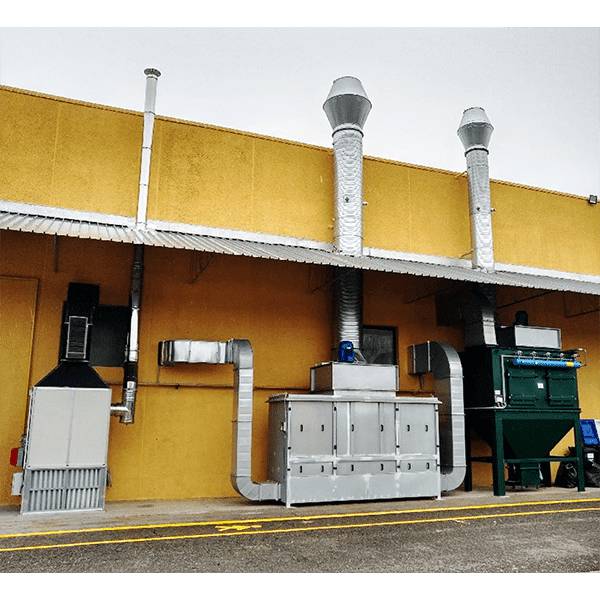
Sandblasting filters
Air filtration and separation
Sandblasting is a process where an abrasive is thrown against the part to be treated. Sandblasting allows you to create a surface with a certain roughness, to allow for a very effective anchoring of the paint that is the application following sandblasting.
Sandblasting is also used to remove rust present on the piece or previous paints to be removed.
The application system of sandblasting or shot blasting, therefore causes a certain dustiness both because any paint present on the piece is pulverized, and thanks to the fact that the abrasive partially deteriorates, thus losing dust.
The dust is sucked up and carried towards the separator filters, which are filters with particular configurations: the sandblasting filters are larger, built with greater reinforcements and very robust anti-abrasion materials. The cartridges are inserted inside with significant distances between one cartridge and another. Cartridges are low pleating, with a small surface area for each cartridge. Finally, the height of the cartridges is increased to ensure excellent durability.
The filters are then designed to have a dusty air path with a pre-drop chamber and an outlet chamber distributed over the entire filter with a large upper outlet.
Finally, the combination of filters with RECUBE guarantees a very long duration over time and energy efficiency, and low noise and low vibration.
All Rimor machines are soundproofed. Here, too, the combination of the filter with the control unit 4.0 and the management of fouling by PLC and touch allows to obtain effective and economical filter management.
Attachments
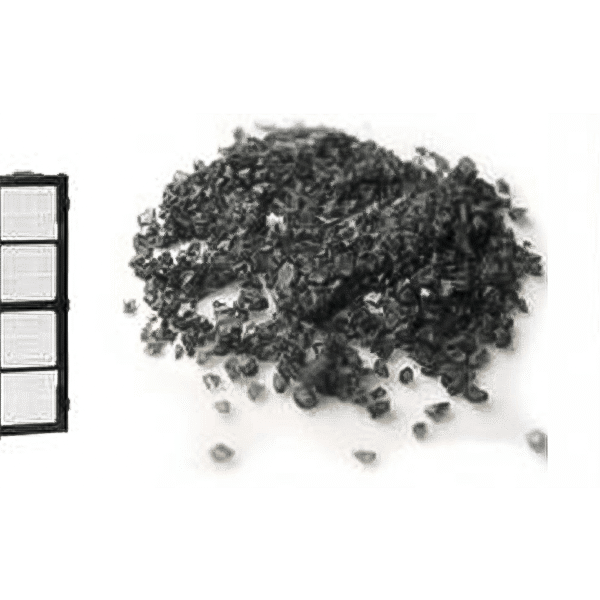
Filters with Activated Carbon
Air filtration and separation
Rimor’s activated carbon filters were created for applications where the quantity of solvent is such that a high quantity of activated carbon is required (even a few thousand kg for each charge). The activated carbon filtration system is used to adsorb a solvent present in the gaseous stream.
The adsorption system is known and ensures that the immense surface of the activated carbons put the gaseous fluid, with a certain contact time, with the suitable reagent to generate this adsorption process.
Absorption has an efficacy of approximately 20% of the weight of activated carbon used; therefore, it is necessary not to have too short management and intervention times in some cases. Furthermore, the activated carbon filters of the rimor have the characteristic of being able to be loaded directly from the upper part and unloaded from the lower part. That allows it to be loaded directly from the tractor from above using the loading arm while the exhausted coal is unloaded from below utilizing a particular opening and closing system.
Rimor’s activated carbon filters guarantee you can buy carbon at the lowest possible cost as it is not first inserted into cartridges, but the bulk material is used.
Rimor’s activated carbon filters are used in automatic painting systems or large spray cabins.
The activated carbon bed is sized for a contact time sufficient for adsorption, and the fluid dynamics simulation ensures that the incoming flow is completely distributed on the activated carbon front. Practical hatches then allow lateral access to move the coal in case of humidity or particular conditions.
Attachments

Special filters: scrubber, electrostatic and coalescer
Air filtration and separation
The scrubber filters are filters for the abatement of mists with gaseous pollutants inside that would not react to inertial filters or sieve filters. Scrubber filters are chambers where a reagent is sprayed against the polluted flow: from here, you can have flat or venturi scrubber filters.
The scrubber filters are also combined with the dehumidifier package if it is necessary to have a pollutant separation system with activated carbon at the bottom.
Electrostatic filters are more expensive solutions than other technologies but have reduced maintenance management and can also be used at high temperatures. Electrostatic filters are very effective, especially for fine dust and for some types of precious dust to be recovered. Electrostatic filters are also applied in combination with activated carbon and absolute filters.
Coalescing filters are filters for oily mists or in combination with quenching tanks or situations where vapors are created that generate a flow with precipitation inside.
The scrubber filtration system, coaelescent or electrostatic, is always applied to the RECUBE, an exclusive ventilation system with effective and rapid maintenance management.
The filters of the rimor and Camit are designed according to the parameters of the fluid dynamics simulation with the effect of obtaining a long life and a maximum possible duration of the filters.
Acid scrubber filters are built with plastic materials.
Attachments

Bag Filters
Air filtration and separation
Bag filters are used as a final separation of systems such as transport or plastic, or wood or other medium-sized components, which do not generate fine dust. The rimor sleeve filters are made with a particular cycloning and soundproofing system.
The sleeves are usually able to separate coarse dust with a reduced amount of small-sized dust inside. The filter media of the bags is either polyester or fabric, depending on the applications.
The central body is made with a special Rimor silent soundproofing coating, a material capable of soundproofing machinery: a patented rimor composite material with a carbon fiber coating. Made and designed in collaboration with the Polytechnic of Turin, it achieves important soundproofing and sound absorption without creating deposits of materials.
The rimor sleeve systems are of the modular type because by adding bodies, it is possible to create separators with more or less filtering surface.
The collection bags are placed under the sleeves with an easy system for disassembling and reassembling the bag.
The sleeve system also includes the version with entry from above without the cyclonators and soundproofers. The system from above is an alternative to the system with the cyclonator, and the choice is purely geometric. If the system is aerial, the solution from above is used, while if the system is on the ground, the system from below is used.
Attachments

Cyclone separator
Air Filtration and separation
Inertial separators are geometric elements, considered static separators with which they create precipitation or separation of the elements carried by the air that are precipitated thanks to the loss of kinetic energy.
The loss of kinetic energy can occur primarily by cyclones, which create a circular motion of the particles that are then precipitated to the bottom of the cyclone. The separator cyclones are of different sizes and can separate even low-weight particles (for example, they are also used to separate polystyrene particles).
The second separation system is the so-called vertical air separator, where the mixture composed of air and particles is dropped from above and an airflow sucked in the opposite direction. The result is that the heavy particles fall downwards while the air is conveyed upwards. This separator can also be used to separate heavier particles from lighter particles.
The separation system with an inclined plane is finally the latest macro family, often used in the plastics sector and the separation of granules; it is composed of an inclined perforated mesh on which a mixed flow of air and particles is conveyed.
The air is conveyed upwards, and the heavy particles fall downwards.
You can then add special accessories, such as the precipitator of electrostatic energy at the inlet of the separators, the unloading rotocells, and the pneumatic unloading aid systems if any parts are deposited.
The separation systems of the rimor are studied with the CFD finite element fluid dynamics simulator.
Attachments
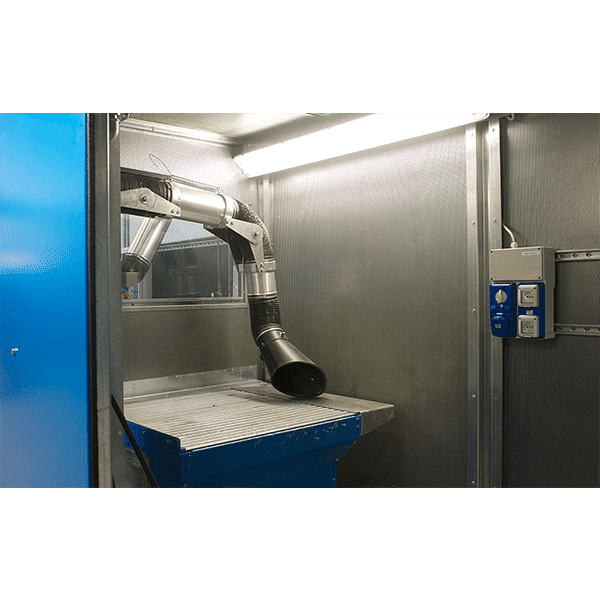
Extraction arms with or without filter and extraction arms and suction walls
Air filtration and separation
Often the capture of pollutants is an important element to obtain an interesting environmental result for the operator. However, it is not certain that a good filter can be a good system, as all the treatment to the operator is regulated by INAIL standards.
To ensure proper capture of pollutants, the application of field elements often combined should be considered.
The first capture system is the mobile suction arm that is placed in correspondence with the operator.
The second capture system is the so-called suction hood or suction front, which creates a capture flow even at interesting distances.
Finally, there are suction benches where the piece is placed on a vacuumed surface. The suction benches of the rimor can be both with filters onboard and without filters onboard.
The construction system of rimor grinding benches involves the use of very robust bars on the bench so that they can be replaced and at the same time guaranteeing a vital duration. Even the trailer benches can support heavy pieces fixed by welding points directly on the corner pieces.
The suction system of the rimor then provides to suck the air from below or the sides, depending on the two possible configurations.
A particular accessory of the trailer benches is the pre-separator which prevents heavy and medium dust from going towards the filters.

